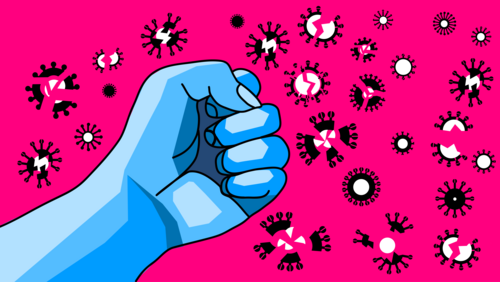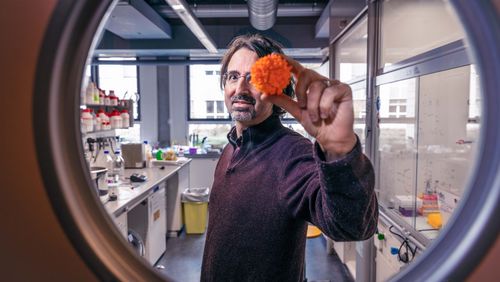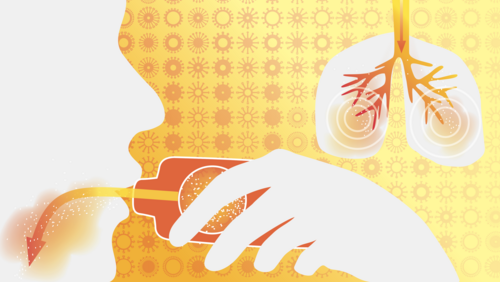
Crushing the viral envelope
Francesco Stellacci’s quest for a broad-spectrum antiviral is progressing at a brisk pace. At the École polytechnique fédérale de Lausanne (EPFL), he and his team have now added a whole new range of highly promising preparations to their already impressive repertoire of antiviral agents.
Although viruses were discovered more than one hundred years ago, their secrets have yet to be fully understood. And although we have very effective vaccinations to prevent several viral diseases, medications for treating viral infections are still rare. In particular, there are no drugs that—akin to broad-spectrum antibiotics—can be used to treat a wide range of viral infections.
Francesco Stellacci and his group at the EPFL Supramolecular Nano-Materials and Interfaces Laboratory in Lausanne have resolved to change this: they’re developing broad-spectrum antivirals whose active substances attack the viruses already before they have the chance to enter a cell and replicate. To create their virucidal mole-cules, the researchers modify cyclodextrins (a type of sugar molecule) by attaching several water-repellent chains of carbon and hydrogen atoms.
Crushing the viral envelope
Due to their chemical end groups, the finger-like protrusions of these carbon-hydrogen chains attract viruses, bind them, and then exert such strong mechanical pressure on them that the viral envelope is destroyed. In contrast to conventional antiviral drugs, the new approach not only prevents viruses from replicating: it also effectively and irreversibly neutralises them—the viral remains are then disposed of by the immune system. And because all the action is extracellular, the human cells themselves remain entirely unaffected.
Stellacci and his team have already developed a promising cyclodextrin-based drug that is successful in combating influenza and other viruses. “We demonstrated its efficacy both in cell cultures and in animal tests with ferrets,” Francesco Stellacci says. “And we’ve advanced so far as to now have an inhalable powder that’s easy to administer.” He says he’s currently seeking funding for developing the substance into a marketable drug. “That’s a major, and expensive, step,” Stellacci says.
New bases for active agents
At the same time, the researchers also expanded their repertoire of antiviral agents—a step made necessary because, for unknown reasons, the original cyclodextrin-based antivirals proved to have limited efficacy against the SARS-CoV-2 coronavirus. After testing a range of new compounds in drug cores, the most promising alternatives for attaching the virus-binding carbon-hydrogen chains proved to be so-called benzenes—ring-shaped molecules made up of six carbon and six hydrogen atoms in their basic form.
The researchers then developed a benzene-based molecule that, in animal experiments, was at least as effective as the approved preparation currently recommended for early treatment of at-risk patients. But the Lausanne drug has other advantages when it comes to healing serious lung infections: in addition to treating SARS-CoV-2, it’s also effective against viruses like influenza, RSV, herpes, hepatitis, HIV or the Epstein-Barr virus.
Medications plus immunisations
Stellacci and his group have also succeeded in increasing the number of functions in their antiviral agents. A study they published last year presents a substance that takes on a dual function when fighting influenza viruses: it acts as a drug by first preventing the viruses from entering a cell and then destroying them, while also stimulating the immune system, hence acting like a vaccine.
At present, Stellacci is seeking other, possibly even more effective benzene-based substances. And he believes the finger-like protrusions of his molecules—the virus-binding carbon-hydrogen chains—hold yet more potential. “We’ve already attained good results with Respiratory syncytial virus (RSV) and Herpes simplex viruses (HSV)” he says. It’s certainly no stretch of the imagination to say more discoveries will soon follow.






